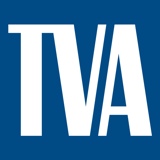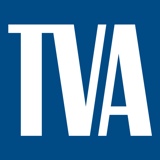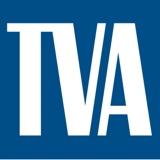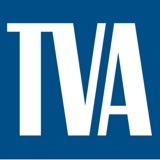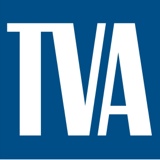Information
-
Document No.
-
Audit Title
-
Site:
-
Department:
- CONTRACTOR
- MAINTENANCE
- OPERATIONS
- OUTAGE
- ENGINEERING
- TECH TRAINING
- LEADERSHIP
- SAFETY
-
Conducted on:
-
Prepared by:
-
Location:
-
Paired Observer:
PRE-JOB BRIEFING
-
Clarify what to accomplish and to avoid
-
Comment:
-
Add media
-
Reinforce NO routine activities exist
-
Comment:
-
Add media
-
Improve error recognition
-
Comment:
-
Add media
-
Ensure all know right HU TOOLS to use
-
Comment:
-
Add media
POST JOB REVIEW
-
Document feedback after working on risk-important power system equipment
-
Comment:
-
Add media
-
Conduct after routine work that could be improved
-
Comment:
-
Add media
-
Conduct after emergent and important work
-
Comment:
-
Add media
-
Conduct after a High-Risk phase of a project
-
Comment:
-
Add media
TWO MINUTE RULE
-
Explores the job site to identify: Right Unit, Train, and Component; Safety & Trip Hazards; Error Precursors (for critical steps); Matches the procedure and PJB
-
Comment:
-
Add media
-
Talk with coworkers / supervisor about hazards and extra precautions to take
-
Comment:
-
Add media
-
Eliminate hazards, install appropriate defenses, or develop contingencies
-
Comment:
-
Add media
STOP when Unsure
-
STOP the activity
-
Comment:
-
Add media
-
Place the job in a safe condition
-
Comment:
-
Add media
-
Notify your immediate Supervisor
-
Comment:
-
Add media
SELF CHECK
-
Stop and focus
-
Comment:
-
Add media
-
Think what will happen with right action?
-
Comment:
-
Add media
-
Act correctly
-
Comment:
-
Add media
-
Review that the result is as expected
-
Comment:
-
Add media
PROCEDURE USE AND ADHERANCE
-
Verify for use
-
Comment:
-
Add media
-
Distribute copies for multiple work sites-designated a lead person / documented
-
Comment:
-
Add media
-
Review before starting / confirm right: Prerequisites, limits, precautions, initial conditions; Instructions; Identification of critical steps
-
Comment:
-
Add media
-
Apply Level of Use rules
-
Comment:
-
Add media
-
Follow each step as written
-
Comment:
-
Add media
-
STOP when unsure if a step: Cannot be performed as written; Might Injure someone; Might Damage Equipment; Leads to wrong/unsafe configuration; Is technically incorrect; Causes an unexpected result; Conflicts with another procedure; Is otherwise unsafe
-
Comment:
-
Add media
THREE-WAY COMMUNICATION
-
Sender states the message: Face-to-Face if practical; Gets Receivers attention (first name); Clearly and concisely; Use noun names with equipment identifiers
-
Comment:
-
Add media
-
Receiver acknowledges the sender: Paraphrases in own words; Repeats UNIDs word-for-word; Ask question if necessary to verify
-
Comment:
-
Add media
-
Sender acknowledges the reply: If right, That is Correct; If Wrong, WRONG and repeats #1
-
Comment:
-
Add media
PEER-CHECKING
-
The individual performing the task locates the component and verbally identifies each unique identifier on the component label to the PEER
-
Comment:
-
Add media
-
The person may point to or touch the equipment to be manipulated during the explanation.
-
Comment:
-
Add media
-
The person performing the task references the controlling document and verbalized the position in which they intend to place (or check) he component
-
Comment:
-
Add media
-
The PEER verbalizes the correct component identification, the intended action is correct, and people or systems are ready for the action.
-
Comment:
-
Add media
-
Both individuals shall be aware of and understand the status of plant equipment that could be affected by the action.
-
Comment:
-
Add media
-
The performing performing the task places (or checks) the component in the intended position.
-
Comment:
-
Add media
-
The PEER witnesses the positioning (or check) of the component and physically verifies proper component position or condition, when applicable.
-
Comment:
-
Add media
CONCURRENT VERIFICATION
-
Performer and Verifier 3-Way on the action, component, and purpose
-
Comment:
-
Add media
-
Each separately S-T-A-R the correct item and agree on the action to take
-
Comment:
-
Add media
-
Verifier watches the action to confirm
-
Comment:
-
Add media
-
Performer acts correctly
-
Comment:
-
Add media
-
Verifier verifies as-found status by: Hands-on check (valve) - preferred; Remote (lights); System response (flow)
-
Comment:
-
Add media
-
Both confirm and sign document
-
Comment:
-
Add media
INDEPENDENT VERIFICATION
-
Performer S-T-A-Rs the correct item.
-
Comment:
-
Add media
-
Performer acts correctly
-
Comment:
-
Add media
-
Performer confirms expected results and signs document
-
Comment:
-
Add media
-
Verifier S-T-A-Rs the item separately
-
Comment:
-
Add media
-
Verifier verifies as-found status by: Hands-on check (valve) - preferred; Remote (lights); System response (flow)
-
Comment:
-
Add media
-
Verifier confirms status, agrees, and signs document
-
Comment:
-
Add media
FLAGGING & OPERATIONAL BARRIERS
-
S-T-A-R the item to be flagged
-
Comment:
-
Add media
-
Flag the correct item; designate a lead person / document
-
Comment:
-
Add media
-
Perform the work
-
Comment:
-
Add media
-
Remove the flagging when done
-
Comment:
-
Add media
PLACEKEEPING
-
Circle a step number to be performed
-
Comment:
-
Add media
-
Read and understand the entire step
-
Comment:
-
Add media
-
Perform the step as written: Check, Initial or Sign blanks/boxes; Do Not Slash continuous steps; N/A IF/The step is not needed
-
Comment:
-
Add media
-
Slash the Circle after step completion
-
Comment:
-
Add media
FIRST CHECK
-
Verify the proper work document step intended to be performed and component to manipulate
-
Comment:
-
Add media
-
Contact Supervisor, Control Room, or person who sent you to the location
-
Comment:
-
Add media
-
Validate your location, component, and task
-
Comment:
-
Add media
-
Continue with assigned task using Self-Check techniques
-
Comment:
-
Add media
PHONETIC ALPHABET
-
Use when communicating alphanumeric information related to plant equipment noun names
-
Comment:
-
Add media
-
Use when specifying train, phase, and channel designations
-
Comment:
-
Add media
-
Use when sender or receiver might misunderstand, such as sound-alike systems, high noise areas, poor reception during radio or telephone communications
-
Comment:
-
Add media
